According to a recent update from the British Army, hundreds of British Army soldiers have deployed to Estonia as part of a major multinational exercise named Exercise Hedgehog.
The exercise, involving more than 13,000 troops from multiple NATO countries, aims to strengthen the alliance’s readiness and reassure allies on NATO’s eastern flank.
The deployment, managed by the 4th Light Brigade Combat Team, also known as ‘The Black Rats’, demonstrates the British Army’s ability to rapidly move a large-scale force to support Estonia. The troops travelled by road, rail, sea, and air, showcasing the flexibility and mobility of British forces.
Brigadier Giles Harris, Deputy Commander of the Estonian Division, described the deployment as a critical rehearsal of the Estonian National Defence Plan. He said in the news update:
“Forty-eight hours ago a multinational combat brigade was in the UK and France and their home locations held at high readiness to deploy as part of NATO’s Forward Land Force (FLF). In a full operational rehearsal, we are now here, rehearsing to defend Estonia under the command of the Estonian Division and NATO.”
Exercise Hedgehog, which runs from 9 to 24 May, is part of Operation Razoredge, a series of multinational exercises aimed at bolstering NATO’s presence in Northern Europe. The exercise will test the combat readiness of the Estonian Defence Force (EDF), practice rapid deployments, and enhance interoperability between allied forces.
Kingsman Amelia McCauley from the 1st Battalion The Duke of Lancaster’s Regiment spoke about the journey to Estonia, saying: “We got a coach down from our base at Weeton Barracks in Preston to Dover, then took a ferry to France. After that, we travelled by coach to Paderborn in Germany and finally flew to Estonia. It took two days, but we’re here to help Estonia and give them the reassurance that, as part of NATO, we’re here and we’re not going anywhere.”
The British troops will integrate and conduct operations alongside the Estonian Defence League, a voluntary national defence organisation. Alongside the UK, forces from the US, France, and other NATO allies are participating in Exercise Hedgehog.


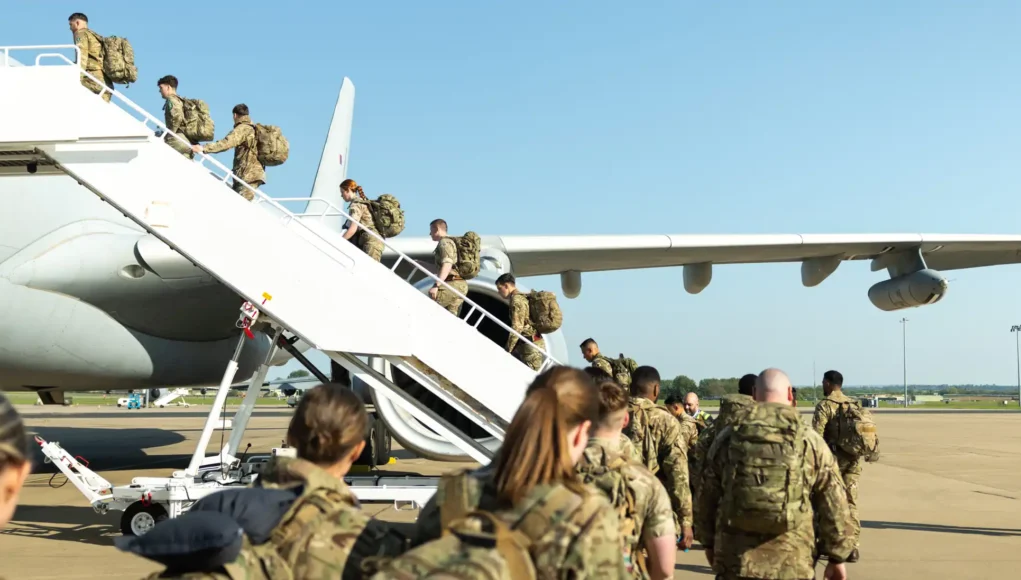
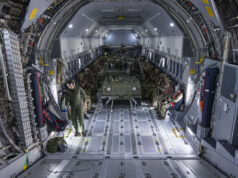
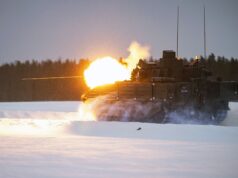
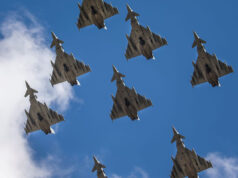
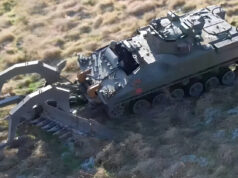
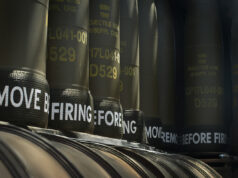
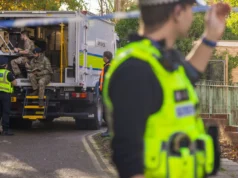
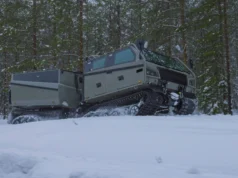

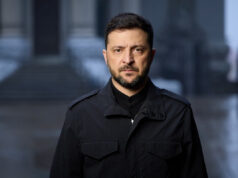

As highlighted here many times, 4 Brigade is not a fully deployable Brigade in that it lacks regular CS CSS formations, which were cut by HMG between 2010 and 2015.
I assume here that it either stole those of other Brigades to enable it, or uses other nations enablers as part of the Multi National Division.
Not necessarily either of those. The article mentions “Hundreds of Troops” which I assumes means either Battalion + or Coy +, neither scale necessarily means using brigade enablers. A Combination of Battalion organic assets, strategic assets such as Voyager and Point Class, and Civilian Contractors would support a battalion going out the door for a limited duration exercise. CS/CSS battalions are more necessary for supporting the deployment of the Brigade as a fighting force, rather than a small component part of it.
Clicking through some of the links it seems the battalion used MoD White Fleet Coaches (which are either centrally held or battalion assets as the case may be), Points and Voyagers, and Eurostar service to deploy the Battalion.
Yeah fair one. I missed the hundreds bit and assumed much of the Bde had deployed.
Quote from article:
“We got a coach down from our base at Weeton Barracks in Preston to Dover, then took a ferry to France. After that, we travelled by coach to Paderborn in Germany and finally flew to Estonia. It took two days,…”
Is this how Britain would reinforce Estonia in a war? In two days it would all be over for a small country like Estonia.
So they are really in no particular hurry to get there,so if this was the most cost effective way of transportation so be it.
Richard, Land Forces do not travel over 3,000km in a few hours wih all their kit. Anyway this brigade is part of 1 Div which is declared to the ARRC. ARRC is used as a Theatre Reserve Force in General War so it doesn’t have to be at ‘the front line’ instantly.
Graham,
The article states that this was “a full operational rehearsal” by high-readiness troops. I did a quick google and a flight from anywhere in the UK to Estonia takes about three hours. The RAF has eight C-17 transport aircraft each able to carry 100 troops with all of their equipment. If the UK is serious about defending Estonia in a time of war and wants to test its ability to deploy troops and equipment quickly then why send them on a two-day trek across Europe by bus, ferry, bus again, then finally plane? Like I said, in two days Estonia would be under Russian occupation.
The orcs are hardly likely to be able to build up a force without NATO noticing of being capable of conquering anywhere in two days!
The build up for Ukraine was reported but not acted upon because no one thought pootin would be mad enough!
Lessons learned there I think and no one is going to ignore the signs now are they?
As Graham pointed out, these troops are part of the ARRC (NATO’s Allied Rapid Reaction Corps), emphasis on the word rapid, I would hope.
Never underestimate your enemy. If the Russian Army conducts “training exercises” near the Estonian border and that spills over to an actual invasion then the same thing will be happening in Latvia and Lithuania so good luck getting tour buses through the Suwalki Gap.
Also, if these troops can fly from Germany to Estonia with all of their equipment then they can fly from the UK to Estonia with all of their equipment. It’s just logical.
I’m not trying to give anyone a hard time, I’m just trying to understand why reinforcements would get on buses, then get off the buses and on to a ferry, then off the ferry back on to buses, get to Germany and then get off the buses yet again with all of their equipment to finally get on an airplane to fly the final leg to Estonia.
Richard, you make your point well. This deployment could have been achieved far more rapidly, whether by CIVAIR or RAF AT.
…but do read Dern’s comment on the training value to be had from a different and yet slower method of transport.
So a little bit of real talk about readyness levels and deployments. First of all: no unit is at 0 hours NTM. Usually high readyness units might be at 24hours NTM, but even that is not sustainable, 16AA typically maintains one or two Companies at 24 hours NTM. (NTM is Notice To Move, so baisically the time from when a message arrives at the unit to when the Unit can be expected to leave camp. NTE, Notice to Effect is the time lag from being told to arriving in place and doing what they where told FYI). You might have a company group in this case from 4 Light Mech Brigade on 24 hours NTM, with follow on elements at 48hours and 7 days NTM, with the entire brigade (if it had CSS) on 10 days NTM (for comparison 30 days NTM is more normal).
So this talk about “It takes 2 days for the unit to get to Estonia” is already a bit bunk, it’s going to take longer.
Then a side tangent: I think this is vital because people often don’t get how military exercises work. There’s this impression that when we train we try to create an exact replica of exactly what will happen and game it out stage by stage, which is 100% not the case. The priority is maximum training value for time and money invested, not a faithful pre-enactment of zero hour. So you’re sitting here saying “Well why take a bus to a ferry to a bus to a train to a plane, that isn’t logical” because you are not using the actual logic involved.
We could load 400 guys onto 4 C-17’s (or more likely Voyagers which is what they did use) and fly them to Estonia and what would we have practiced? Boarding procedures in Brize and used a considerable portion of our strategic airlift for the exercise, and learned not a lot. Instead we’ve: Practiced commandering civilian rail traffic to surge troops forward. Practiced Road marches for a mechanised force using white fleet and organic vehicles, practiced embarking and disembarking at foreign ports onto both military and civilian contracted sea lift, and then we also got to practice loading people on to air lift and flying them into theatre. The training value is much higher for very similar inputs of time and money. So no, it is logical, especially as we are unlikely to:
Step 2: Actually getting to Estona: Fly everyone into country. You talk about the Suwalski gap, but remember that Kaliningrad has considerable A2AD assets and flying troops through that is going to be a high risk activity. By comparison the actual gap is probably the most heavily defended part of NATO, defended by the Poles, Germans and Lithuanians on a permanent basis. Attacking this is going to be the equivalent of Russia throwing itself at the JFO, which is not quick or easy, and it’ll be against a much better equipped foe than the Ukrainians. (Side note we didn’t fly the troops to Estonia with all their equipment, most of it went via sea lift but okay).
Part 3: “Estonia will fall in two days.”
No it won’t. Estonia is, at it’s narrowest, 100 miles across. Just for perspective, it took the Russian army a month during the opening phase of the war to advance from the border, past Sumy and to Pryluky, a little over 100miles from the border. (And realistically there is only one major axis of advance the Russians can take into Estonia which makes the situation even worse for them). So no, it’s not “If we take 2 days as the country furthest from the Russian border to get our first reinforcements into theatre, Estonia will be fully occupied.”
“Practiced commandering civilian rail traffic to surge troops forward. Practiced Road marches for a mechanised force using white fleet and organic vehicles, practiced embarking and disembarking at foreign ports onto both military and civilian contracted sea lift, and then we also got to practice loading people on to air lift and flying them into theatre. The training value is much higher for very similar inputs of time and money.”
Okay, fair enough. I’m not in the military, never have been. A military is a large organization with its own way of doing things for reasons which may not be apparent to people on the outside of that organization. I’ll wave a white flag on that point.
Regarding your final point, however, when we’re talking about the Baltic states don’t forget that each of these small countries has a Russian-speaking population which may or may not be culturally integrated into that country. These Russia-speaking parts of the population tend to get most of their news from Russian TV and they often believe that they’re being oppressed linguistically and ethnically. These people would likely be open to the idea of committing acts of sabotage to aid the Russian military. This happened in the Donbass (i.e. the most Russian part of Ukraine) and that’s the part of Ukraine that Russia has held for 11 years now. Thanks to the vicissitudes of history none of the Baltic states are ethnically homogeneous and that might speed up the Russian advance. Let’s just hope that all of this remains hypothetical.
Ukraine in 2014 does not compare to Estonia in the slightest, so I would really caution you against making that comparison. Ukraine in 2014 was incredibly weak, militarily speaking. During that initial 2014 invasion the Russian regular army tried to advance on Mariupol, which is 27 miles from the Russian border. To put into perspective how weak the Ukrainian Army was (and how weak the Russian army was) at the the time, it couldn’t defend Mariupol and it was a Militia build from organised crime networks that defended the city. Successfully.
Ukraine in 2014 is not the Baltics in 2025, nations that are well aware of the threat that Russia poses, have been modernising their forces, integrating them in NATO, and have permanent NATO Brigades on their soil.
Next: Russia can only advance into Estonia by two directions. One if forcing a crossing at Narva. Which, good luck to them. Yes, Narva is the part of Estonia that is most Russian, but also the only way for Russia to attack Narva is across one road bridge and one rail bridge, straight into the city, so if the Estonians even have a hint of warning that’s going to be bloody, house by house urban fighting and Russia is not going to thunder run through Narva and take the country in 48 hours. Even if Narva is taken by surprise, the Russian Army would then be constrained onto a narrow front and be advancing directly toward the bases of the Estonian 1st Brigade and the NATO EFP forces which are garrisoning that line of advance.
The only other realistic axis for Russian Advance is the roughly 30m front around Pskov, which, well that area is predominantly Estonian, has the 2nd Estonian regular brigade stationed on it’s most likely axis of advance (and good luck to the Russian ground forces trying to advance up the only MSR to Tartu with the attention of NATO airforces), and also is under the Southern Territorial Command, which is the only Command to have 5 Maalev’s, so again, that’ll be hard fighting. It’s also a long way to anywhere from Pskov, nearly 200miles by road to Tallinn. (Reminder that after 5 months of fighting, and with the local population alledgedly on side, against a very weak Ukrainian Army, the Russians furthest point of control in 2014 was Horlivka, which is about 50 miles from the border).
Can Russia grab some of Estonia’s south, or even potentially Narva? Sure. Can Russia occupy all of Estonia in less time than it would take NATO to start surging reinforcements into the country? Nope.
It’s just more posturing by the British Government and the MoD, pretending that we are still a first-rate military power. Well done for selling off the Hercs
David, these guys are doing their job. This is not a PR stunt. Their brigade is part of 1 Div, which is declared to NATO. They would deploy to Europe if conflict broke out in eastern Europe ie if Russia invaded a NATO country. That really is what NATO troops do. Even if we had the Hercs I doubt they would fly from Preston to Tallinn.
Certainly not. If air transport where deemed the way to go, it would be Voyager and C17 for vehicles.
The chances of reinforcing the Baltic states in an emergency are slender. The land route through the Suwalki Gap (between Kalimimgrad and Belarus) could be closed by missile and drone strikes. The Baltic sea route would be vulnerable to missile attack from Kaliningrad. Reinforcement by air would face a large-scale SAM threat.
It says to me that a) 4 Bde Grp should be forward-based in Estonia i peacetime, same as the German Bde in Lithuania, b) it should be atracked armoured infantry force, not a light infantry one, again as the German Bde and c) Kaliningrad will need to reduced and occupied early doors, to permit reinforcement of the Baltic forces.
There is no way that 4 Bde could meander there by coach, rail, sea or air if hostilities threatened, it would risk an unacceptedly high scale of losses.
This is the kind of overstretch that comes from trying to do the job of 9 or 10 bdes with just 4.5. We badly and urgently need to increase army numbers, which have been cut repeatedly to the current miniscule level.
I’m sorry like Richard I’m not trying to be awkward but!
While all you describe above is going on what are the navies and airforces of the SEVEN NATO countries that are all around the Baltic doing?
The other thing is: The Suwalski gap is not small. Like, yes I get it, it looks small on a map, but border to border it’s a similar distance as London to Brighton, and fankly, both the Kaliningrad and Belarussian (Assuming Belarus joined the War, potatoman seems unkeen on even helping Putin in Ukraine) sides of the border represent cauldrons that would themselves be very attractive targets for NATO artillery and airstrikes. It’s worth remembering that Poland has an entire Mechanised Division with 7 Artillery Battalions facing Kaliningrad, another Mechanised Division facing Belarus and are standing up a third division to be stationed between them.
OT, but hopefully of interest. I’ve just found out that Parliament goes into Whitsun Recess on 23rd May….so perhaps that means SDR will be released on 22nd May, so there is no time to debate any awkward conclusions! Its a standard HMG ‘trick’.